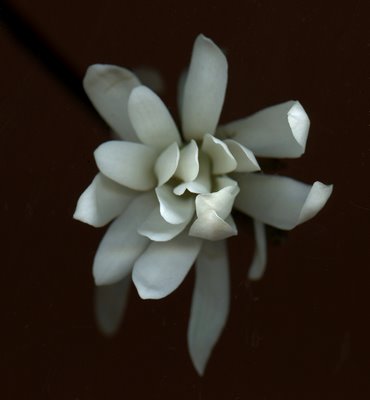Magnolia stellata - Stella Maris?
Monday, April 21, 2008

Magnolia stellata grows wild in certain parts of the Ise Bay area of central Honshū, Japan’s largest island, at elevations between 50m and 600m. It grows by streamsides and in moist, boggy areas.
Our Magnolia stellata (Star Magnolia) came from a nearby garden. The house was being torn down. I asked the crane operator if I could help myself. With a smile he nodded in the affirmative. The magnolia replaced a dead Lawson cypress by our kitchen bed that had died of root rot. Our garden when we purchased the house in 1986 had at least 8 of these cypresses that have succumbed to root rot. We have been replacing them as they die with other trees. The magnolia for me has been a tree of fascination because of its great botanical age. There are fossilized specimens of Magnolia accuminata that date back 20 million years. Magnolias were flourishing before bees so the flowers are designed to be pollinated by beetles.
Our stellata is in bloom right now and it has never looked better. The reason is that it has not rained. Rain makes the stellata blooms look like sickly droopy mess.
I associate our stellata with the name of an Argentine navy chapel in Buenos Aires called Stella Maris. It took a while before I figured out the name. Stella Maris (or Star of the Sea) was the name sailors gave the Virgin Mary. Of all the armed forces of Argentina, it is the navy that is the most Catholic. When Perón started burning churches in 1955 the Argentine Navy began the rebellion that ultimately toppled the dictator.






